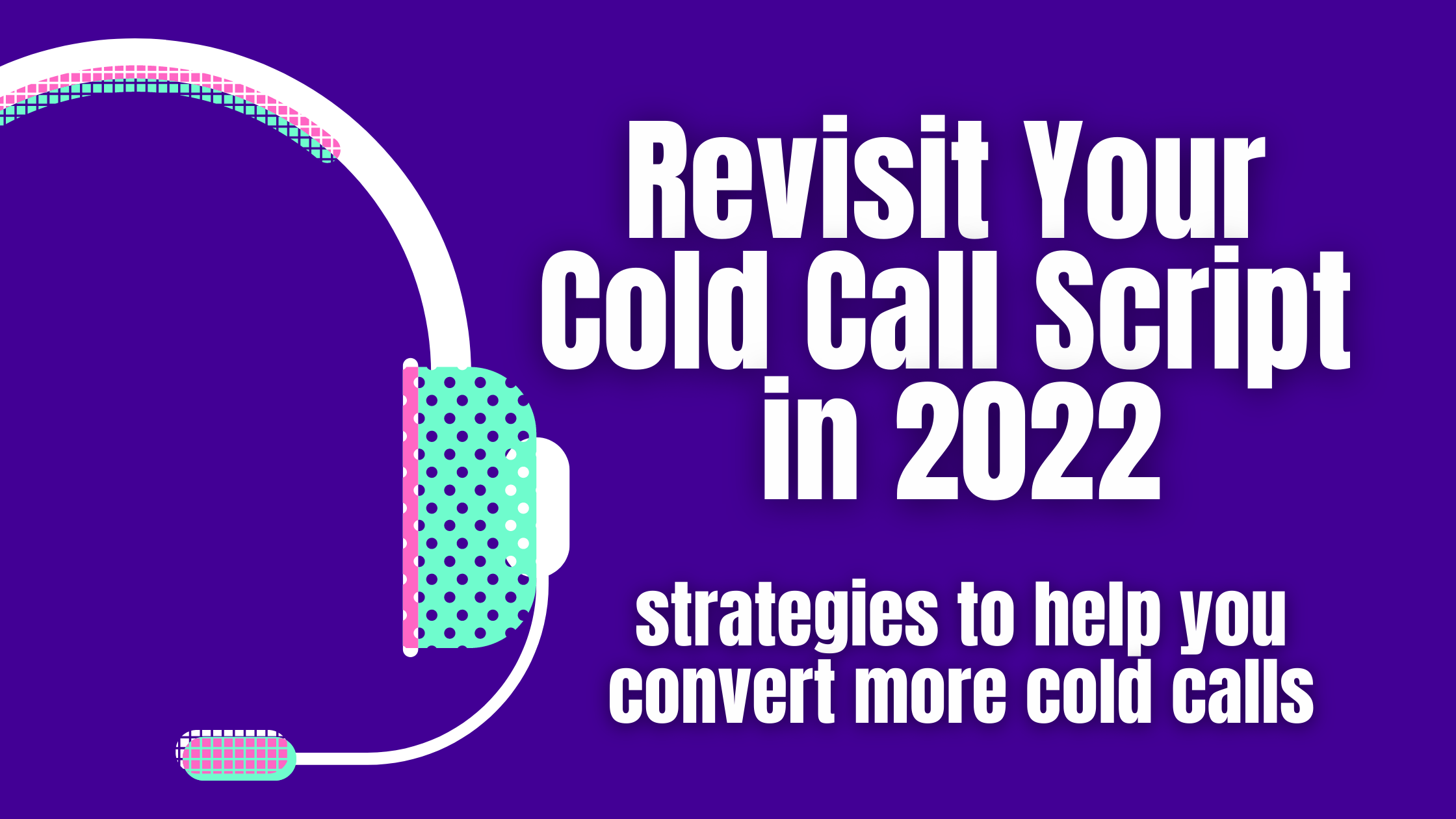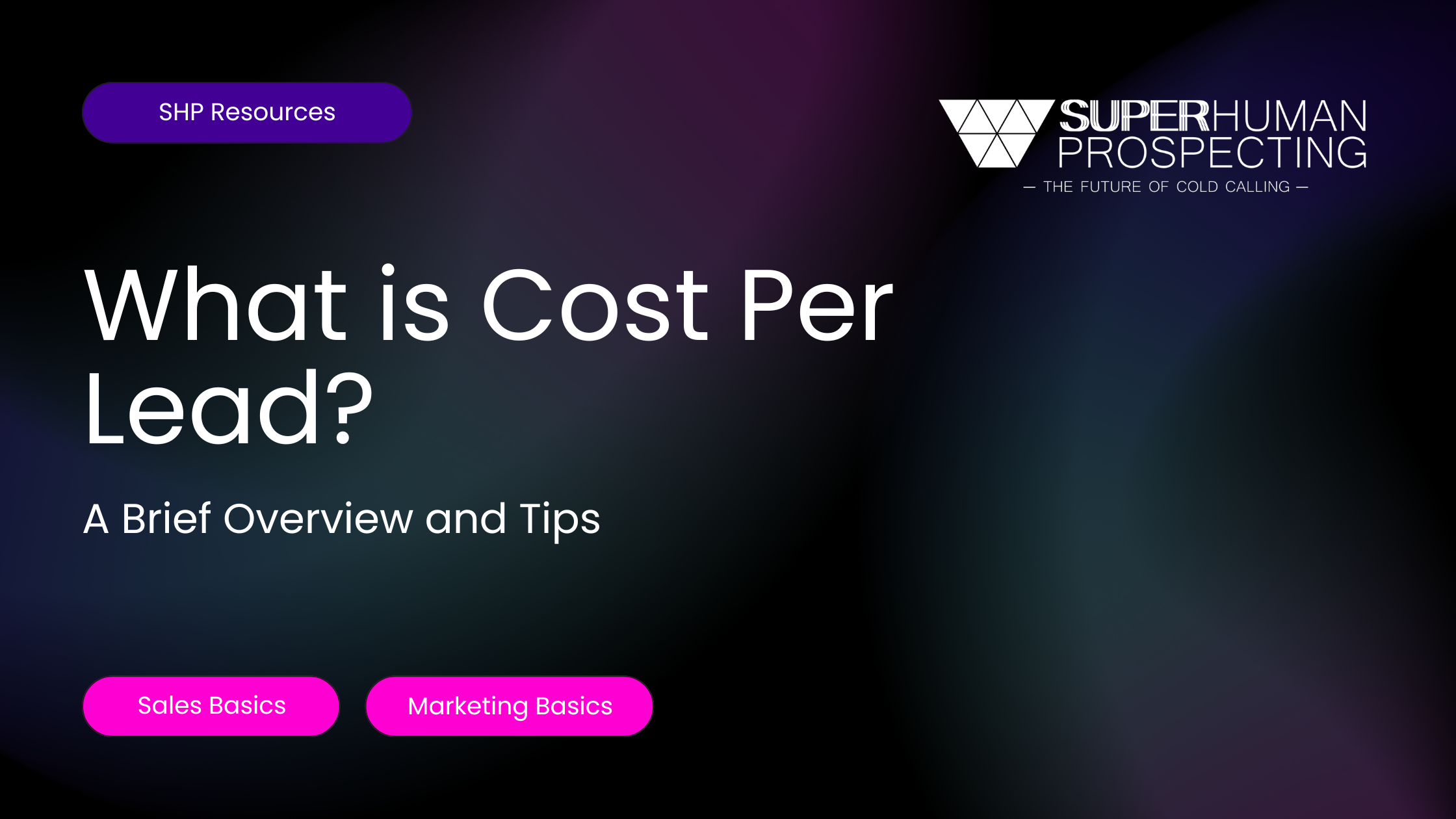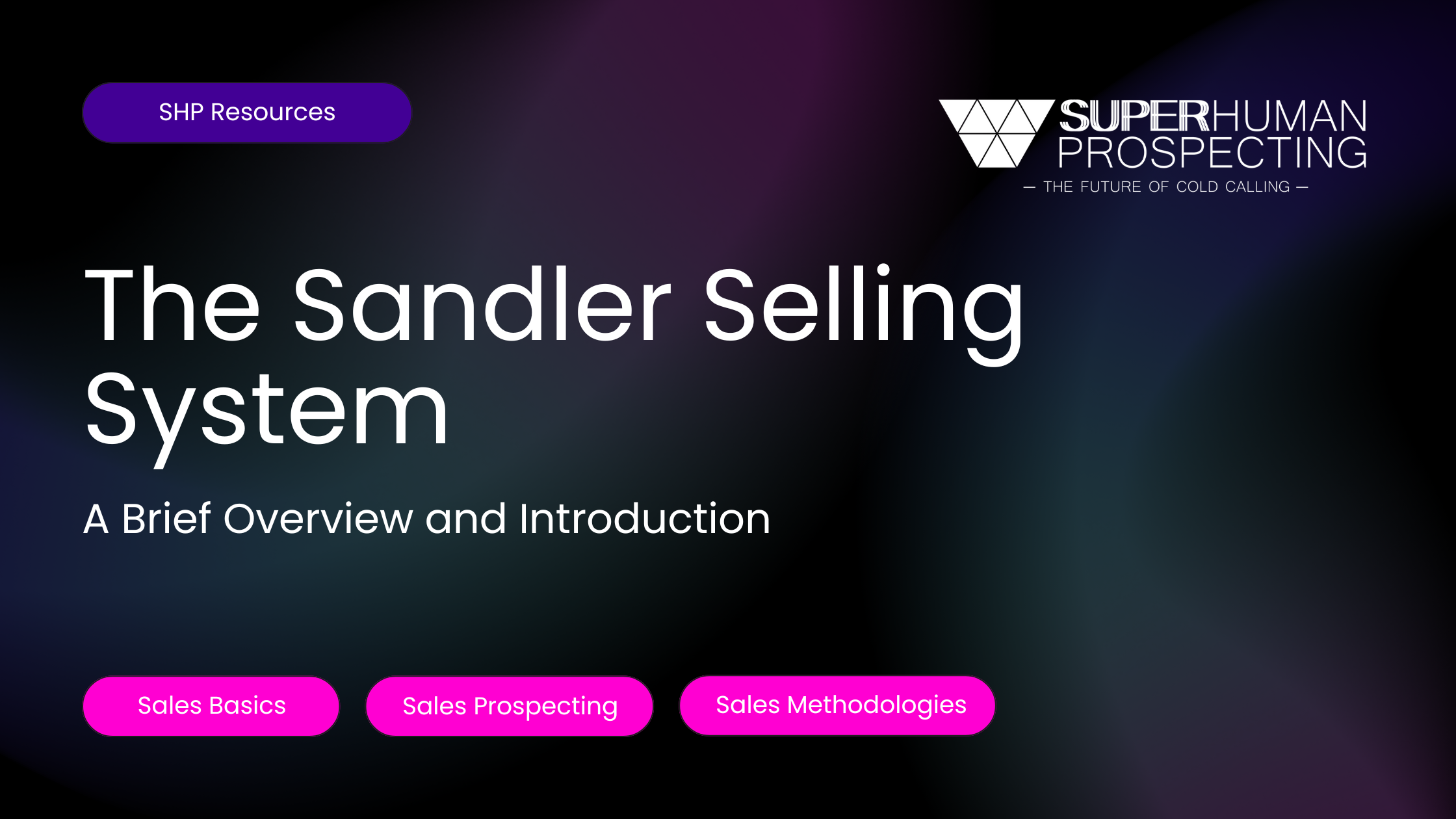From startups to enterprises, almost every sales team uses cold calling in some form. As one of the most traditional techniques in the sales process, it’s used to gain immediate feedback, build stronger relationships, and create interest in your offering.
Even in our technology-centric world, cold calling continues to be the best channel for direct conversations with your potential buyers.
Cold calling is based on a two-variable premise: targeting and messaging. Targeting answers the question, “Who are we selling to?” While messaging answers, “What are we saying to provide value?”
If you aren’t finding success at cold calling, it’s most likely because you don’t have these two points clearly defined. For example, you won’t find much success in cold calling if you are speaking to the wrong audience or saying the wrong thing when you reach them.
Convert More Cold Calls With Your Script
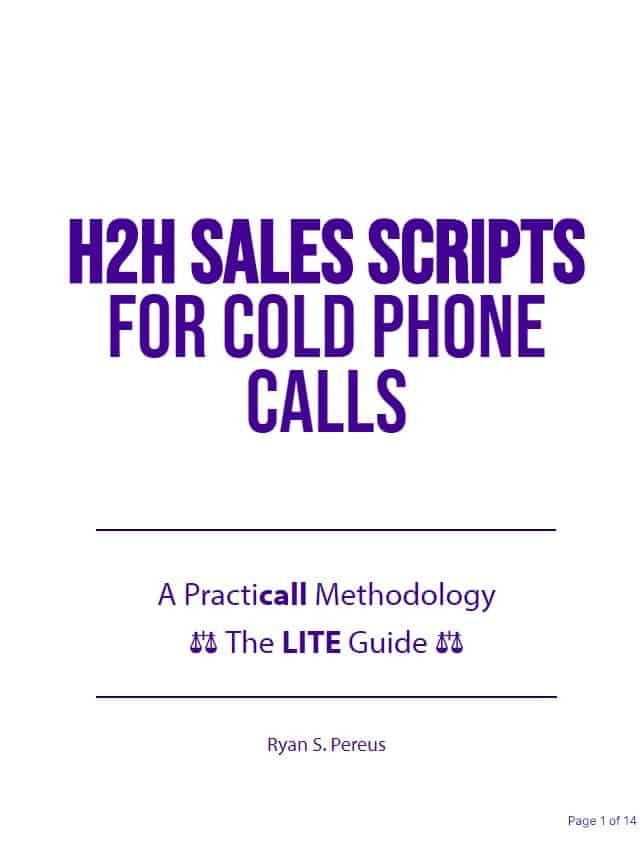
A well-written sales script is a valuable tool that can help guide the right language, information, and structure needed to have the best conversation possible.
Cold calling is about building trust and moving your prospect forward in the buying journey and sales is all about data. A script allows you to have measurable, standardized results you can compare and contrast.
A sales script allows you to provide more value to your ideal customers through micro-adjustments or incremental improvements as you learn more about them or how they use your offering.
H2H Sales Scripts For Cold Phone Calls
We’ve been testing our sales script methodology for the past 5 years, studying the data from over 500,000 cold calls.
From that data, we built The H2H (Human-to-Human) Sales Methodology. It focuses on maintaining the highest level of performance (moving prospects to the next steps) while committing to a human approach (language and construct) that eliminates customer regret or buyer’s remorse.
The H2H Sales Scripts have a consistent strategy in all channels whether it be a cold conversation over the phone, a gatekeeper conversation, email copy, a sales presentation or demo, a sales closing, or a variety of other sales conversational scenarios. This is the framework we will be using to build your cold calling script.
This conversation structure breaks through the strongest barriers of the “salesperson stigma” and penetrates the shell that has been scarred hundreds of times – whether that is from TV & Media, personal experience, or societal norms. Developing an H2H Sales Script isn’t just about the first sale, it’s about always selling customer satisfaction.
Targeting Your Ideal Audience
Even if you think you have your ideal customer profile(s) and target audience(s) defined, it is important to take a look at industry competition, and the marketplace and note any changes that could impact your offering or the value you provide. Reevaluate the market and your ideal customer profiles to make sure you are attracting people who will most benefit from your offering.
Cold calling is a one-on-one opportunity, so it is important to know who you can speak with and who might lead you to the decision-maker. Is it one person or are multiple stakeholders or influencers involved that you can contact? Understanding gatekeepers or influencers is important to know before writing your cold calling script.
What Message Resonates Best With Prospects?
Even if we compile the best addressable targets, what is the use if we can’t articulate how individuals will find value in your product? Using the right words will lead your prospect down the desired path, putting them in the right frame of mind to listen to what you have to say – so you must choose each one carefully.
The message needs to incite pain, a palpable benefit for the prospect, or an overwhelming reason to move forward. The most important criteria of a quality message or script is to ensure there are at least one tangible benefit and one feature that differentiates the product or service from the competition.
We call the Value Proposition Trifecta, it’s a formula for extracting value from a company’s offering and identifying what the possibilities are for the most poignant message for your prospect. You’ll need to remember these keywords when writing your script later.
- Differentiating Feature– A fact or attribute about an offering that sets it apart or makes it unique to the marketplace
- Tangible Benefit– A result, identifiable value, or an impact on the business that is measurable
- Outstanding Accolade– A ranking, referral, or accomplishment that sets you apart in the marketplace
Cold calling is also about delivery, so before you dial, make sure you understand the key factors that go into a cold call. Understanding pauses, knowing how to mirror or use emotional attunement, and timing are all contributing factors to a mutually beneficial conversation.
The Purpose Of A Cold Call
To better illustrate the purpose of a cold call, we broke it down into 3 key layers, called our Trust Umbrella. It covers every part of the cold call from start to finish, showing how each function or stage relates to the other.
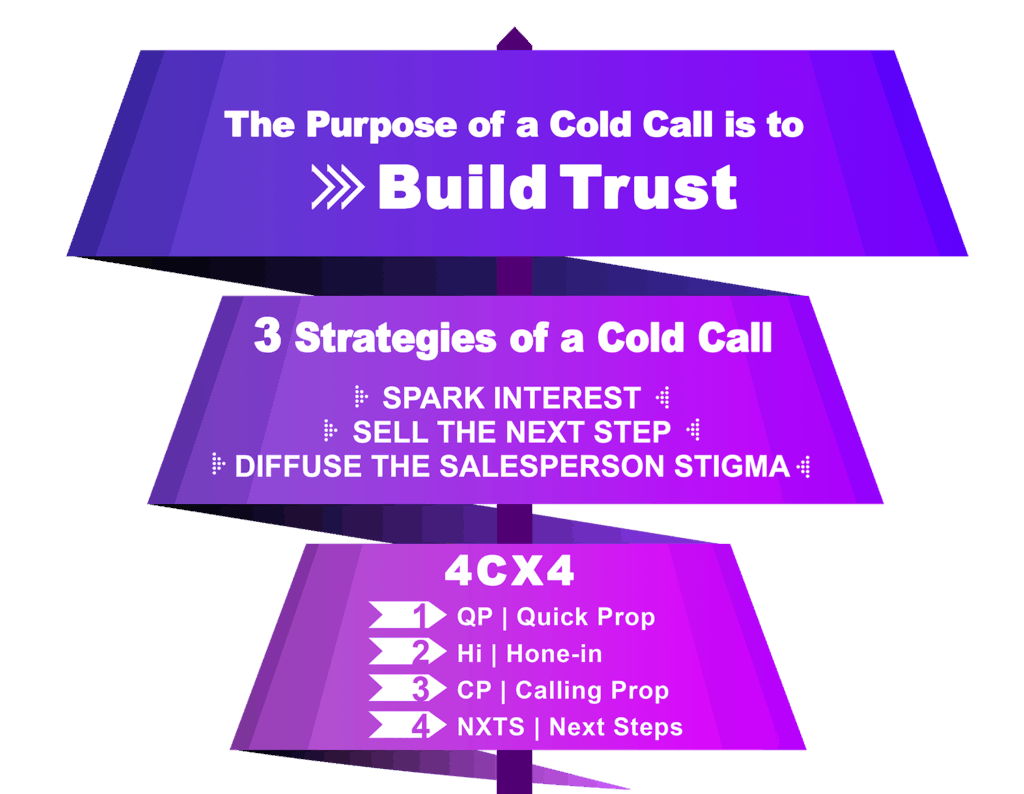
The first layer of the cold call is the relational or philosophical layer. It answers the question, “What is the purpose of a cold phone call?
The second layer is more objective. It covers the different strategies of a cold phone call conversation. These are the goals of the call.
The 3rd layer in the Trust Umbrella is the 4CX4 or 4 Components of a Cold Call. This is a framework built for understanding how a human conversation works in an application format. Think of these components as the bone structure of our script strategy.
Critics of the cold call script might say that this is limiting or restricting the creativity within the conversation. In reality, it does the opposite. We can now think outside of the box because we have a framework to work within that moves us all in the same direction, towards the same goal.
Layer 1: Building Trust On Your Cold Call
We believe the purpose of a cold call is to build trust. We also believe that building trust is the catalyst in all selling methodology because, without it, you have little chance of success.
Your prospect must:
- Trust in the efficacy of the product or service being offered
- Trust in the ambassador or brand
- Trust in the process
In the sales process, especially in outbound sales development, this must come first.
Layer 2: The 3 Strategies Of A Cold Phone Call
This second layer in the trust umbrella falls underneath zooms-in to some of the more objective strategies of a cold phone call conversation. We call these the 3 strategies of a cold phone call.
Spark Interest
We have to use words and language that encourage the person on the other end to listen and hear value in what we are calling about. We can do this in a few ways:
- Spark interest in the product or service
- Spark interest in how you can help them specifically
- Spark interest in you by building rapport with your prospecting
- Spark interest in the brand
Diffuse the Salesperson Stigma
Diffusing the salesperson stigma is a strategy for breaking down barriers and rebuilding trust. This manifests itself in quite a few ways along the conversation. Although it’s true that the design of the conversation naturally diffuses more than others may, and that selling the next step rather than selling the product or service diffuses stigma, we’ve found there are still more effective ways.
Objections that arise in many calls have less to do with a product question, and more with the pressure, the prospect feels about committing or being pushed into something that they’ll regret.
Sell the Next Step (Not Your Product or Service)
Building trust slows the sales process. While it’s counter-intuitive, slowing down the sales process in the mind of the prospect can actually speed up their trust in you, your brand, your product, and your process faster.
Understanding the salesperson stigma will help speed trust in other ways, but understanding how to design a sales conversation around a sensible goal is paramount to converting at the highest levels while increasing trust with your prospects.
Layer 3: The 4 Components Of A Cold Call
The 3rd layer in the Trust Umbrella is what we call the 4CX4 or 4 Components of a cold call. As we previously mentioned, this is the overall structure of your cold call, guiding how you move through the call.
The 4 components are the Quick Prop, the Hone-in, the Next Steps, and the Calling Prop.
1. Quick Prop (QP):
This is about stating a light feature or benefit and getting the prospect in the right frame of mind.
- Assumptions: The decision-maker (DM) is not expecting your call & is busy
- Purpose: To move the DM into the right frame of mind to think & keep them on the phone
- Instruction: State what you do and lite feature and or lite benefit
2. Hone-In (HI):
This is about pinpointing your prospect’s needs and “honing in” on how you can specifically help them.
- Assumptions: The DM’s business can improve or is experiencing pain
- Purpose: Begin a conversation & identify the use status of the product or service being offered
- Instruction: Ask questions directed around pain & ask about familiarity with product/service
3. Calling Prop (CP):
This is where we deliver our 3 keys to a value proposition using differentiating features, tangible benefits, or outstanding accolades that can make a difference in the mind of the prospect.
- Assumptions: There is an opportunity to provide value if the call has gone this far
- Purpose: To spark interest in a product or service and speak to their specific pain
- Instruction: Focus CP around answers in HI & use the Value Prop Trifecta
4. Next Steps (NXTS)
More than a call-to-action tier, this contains the philosophies and values of a cold call into a more practical context. What are the next steps that make the most sense for your business relationship?
- Assumptions: There is a high probability of interest if the first components completed
- Purpose: Identify the next steps
- Instruction: Always ask for the next steps in accordance with the pre-call strategy you’ve already identified
The Conversion Probability Timeline
As time in a cold phone call adds up, the higher chance there is of converting a conversation to the next steps.
In the conversion probability timeline, moving from left to right, you see the quick prop, hone-in, call prop, and next steps. The order of the components demonstrates a natural sales conversation progression with a prospect that illustrates the likelihood of a desired next step identified as time increases.
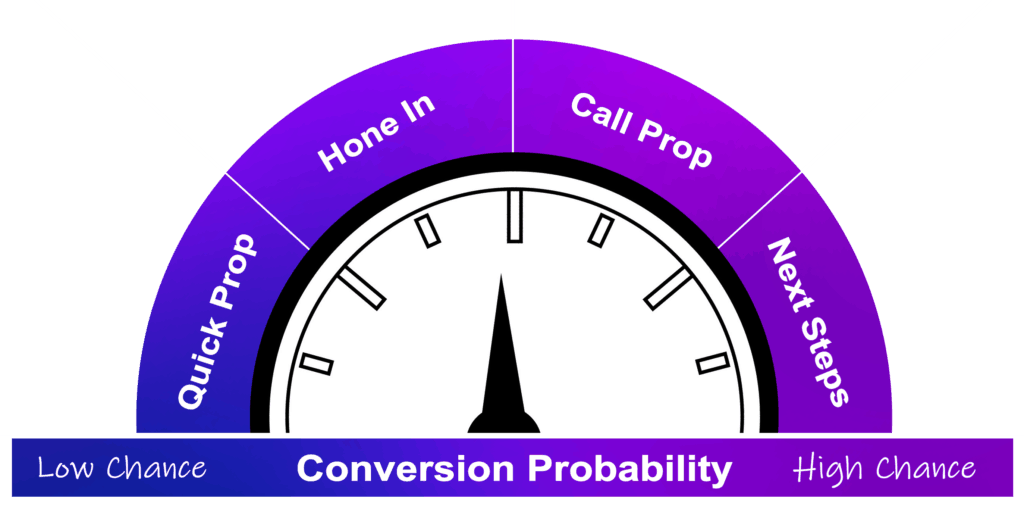
The first two components in the CCF act as a defensive move. Here, the natural law of buyers’ resistance kicks in we assume the prospect feels negative in the first 15 seconds of the conversation. To dig our way out, we must simply get through the first seconds of the call.
Overcompensating and trying too hard to impress them can backfire, so understanding the likelihood of conversion is low in the first few seconds helps us realize how fragile our cold phone conversations really are. It’s about having a clear understanding of the call and being able to properly articulate the goal of the call.
As the needle begins to move to the right, we see the responsibility shift and you’ll have more control over the call. The chances of success increase as you perform well and move through your value proposition trifecta.
This is where top cold call performers live – in the calling prop and in the next steps. The more we can live here with prospects, the higher our conversion will be during cold phone calls with decision-makers.
After years of experimentation, testing, analysis, and refinement, our data-driven outcomes give us confidence in the efficacy of our methods. Not only will the H2H Sales Scripts™ Methodology be refined as we test new techniques, strategies, and philosophies, but it will also transform as the market itself does.
H2H was developed from the bad taste in prospects’ mouths put there by salespeople of a past era. So as we listen to the market, the script will continuously adapt to serve better.

